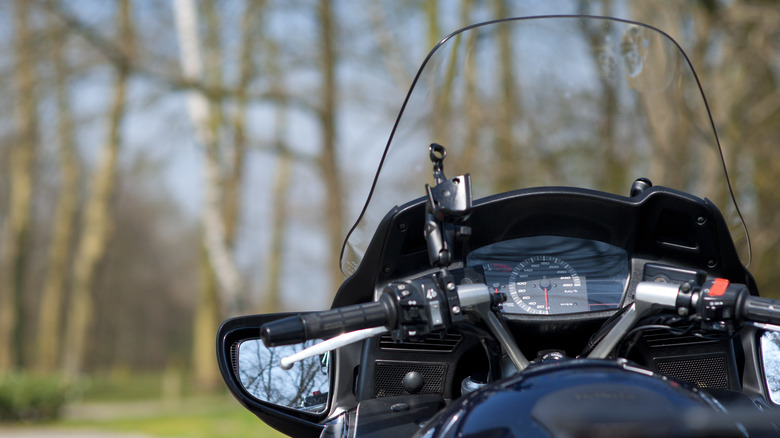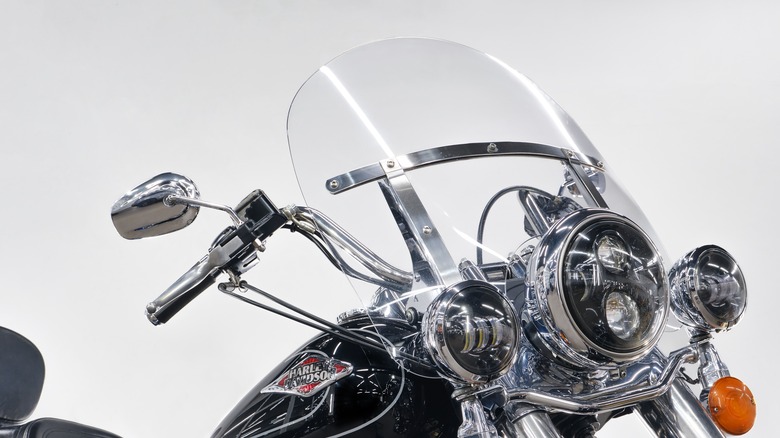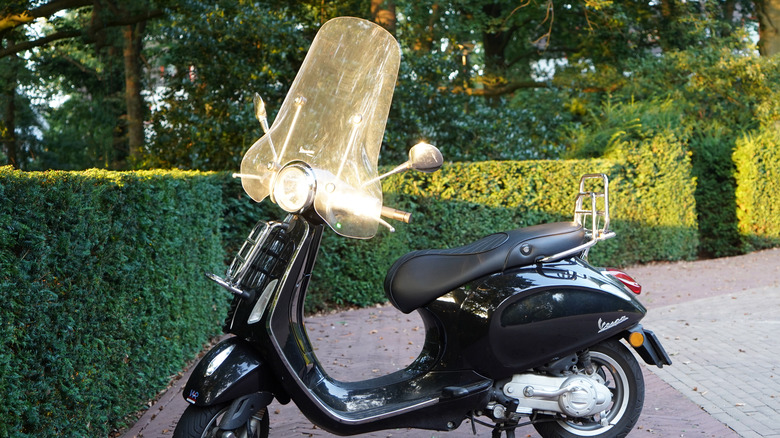The Best Way To Clean A Cloudy Motorcycle Windshield And Make It Clear Again
We may receive a commission on purchases made from links.
Motorcycle windshields are either acrylic (Lucite) or polycarbonate (Lexan). Acrylic has a shinier finish, is more resistant to fading or yellowing, and costs less than polycarbonate. The downside is acrylic motorcycle windshields are prone to cracking and could shatter upon hard impact.
Meanwhile, polycarbonate is 20 times more shatter-resistant than acrylic, but is costlier and scratches easily with improper cleaning and handling. Despite their benefits and drawbacks, acrylic and polycarbonate are lighter and more rigid than glass, making them ideal for motorcycle applications. Moreover, polycarbonate is 200 times stronger than glass, while acrylic is four to eight times more impact-proof.
However, acrylic and polycarbonate windshields succumb to the year-round effects of weather, UV exposure, and bug splatters. Like those plastic headlight lenses on modern cars, motorcycle windshields could turn foggy, severely scratched, hazy, or yellowish as they age, compromising clarity, visibility, and overall safety when riding. The most affordable option is to do a basic DIY restoration, and it only takes a few household products to do it right.
How to clean motorcycle windscreens
Before we get straight to the restoration and cleaning process, it's critical to know what not to use when cleaning acrylic or Lexan motorcycle windshields. Avoid using dry paper towels, abrasive materials, ammonia-based glass cleaners, all-purpose cleaners, petroleum-based chemicals, or Windex. Wiping a dirty plastic windshield with a paper towel or dry cloth is a surefire way to induce scratching and haze. On the other hand, harsh chemical solvents could cause more harm than good and make the windshield more hazy than before.
The best way to clean motorcycle windshields is to wipe them with a wet microfiber towel. Mix a few drops of dish soap (or ordinary car shampoo) with warm water in a small bucket, dunk the microfiber towel, wring out the excess, and gently wipe the windshield using left-to-right or up-and-down motions.
If dried insects or dead bugs are on the windshield, do not forcefully wipe them away to prevent scratching the finish. Instead, grab the wet towel, lay it over the stained area, allow it to soak for a minute or two, and wipe off gently to dissolve the leftover bug residue. Otherwise, don't forget to rinse with water or make a final wipe using a separate, moist microfiber towel.
How to remove scratches and haze
Removing scratches, haze, or yellowing from plastic motorcycle windshields requires polish or plastic cleaners like the Novus Plastic Polish and Scratch Remover, or the Meguiar's Mirror Glaze Clear Plastic Cleaner. Always start with a freshly washed or clean surface before polishing. The restoration process is no different from the procedures in polishing car paint. The best part is you can do it by hand, or using a dual-action polisher with a foam pad attachment.
Whether polishing by hand or with good ole elbow grease, the trick is to shake the product well, only use a small amount of the polish at any given section, and not allow the product to dry before removing the excess. Dispense a few drops of the polish into a foam applicator pad and use it to wipe the windshield using light to moderate pressure. Grab a dry microfiber towel and wipe off the residue before it dries, remembering to turn the towel over and make a final wipe to buff the surface. Repeat the process until the entire windshield is free of scratches and haze.
There are things you can do to prevent your motorcycle windshield from deteriorating or losing its clarity. Avoid parking for prolonged periods under the baking hot sun, and you could slide an old t-shirt over the windshield to protect it from the elements when storing your bike. And whatever you do, resist the urge to wipe the windscreen with a dry towel or abrasive materials like dry paper towels, even when there are dead bugs on it.


